Pavakkai Pitlai is a south Indian dal made with extraordinarily healthy bitter gourds or bitter melons. Pair it with basmati rice, idli or dosa for a delicious dinner.
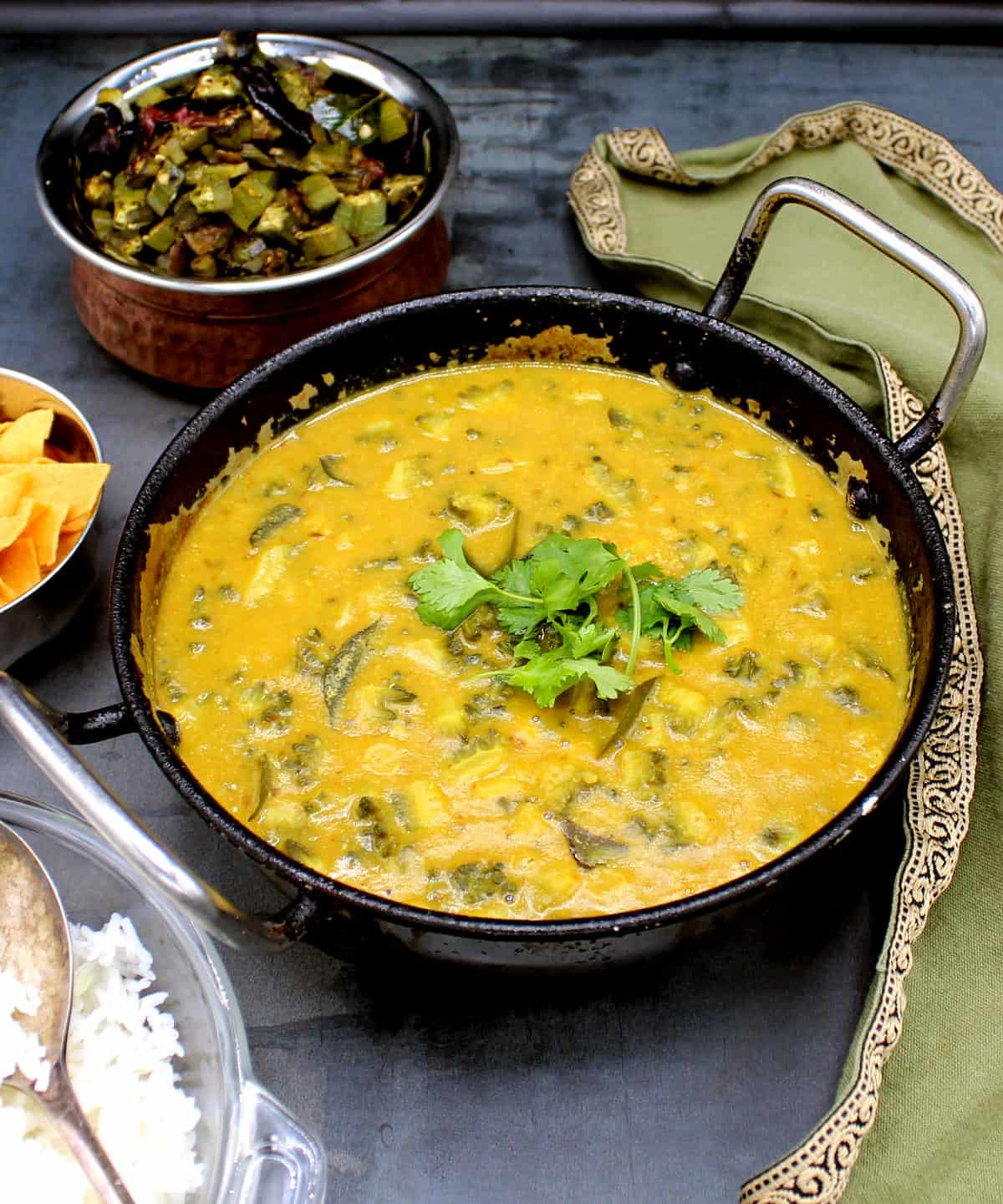
I have for you today a recipe that is one of my favorites and perhaps one of the healthiest foods I cook in my kitchen: a bitter gourd or pavakkai pitlai -- a delicious South Indian dal that goes fabulously with rice.
Some of you might immediately dismiss this recipe as one you'll never cook, even if you love Indian food. Perhaps it sounds a bit too exotic. But do hear me out before you make up your mind and who knows? You might be a little more convinced to make a trip to the Indian or Asian supermarket and buy a bunch of these healthful veggies.
Getting to know the bitter gourd/bitter melon
Bitter gourds or bitter melons (also called balsam pears) might be unfamiliar to most of you reading this, but they are related to veggies you already love, including cucumbers and zucchini. They are commonly eaten in some Asian countries, including Japan, China and India (where they go by karela/pavakkai/karle, among other names).
What makes bitter gourd a food worth embracing, no matter where you live, is that this is one of the healthiest superfoods known to mankind, with a nutritional profile that would be the envy of every other vegetable.
Bitter melons got some global publicity when CNN's Sanjay Gupta traveled to Okinawa, Japan, a few years back and highlighted this power veggie (called "goya" locally) as one of the superfoods that contribute to the Okinawans' famous longevity and healthfulness. Ayurveda also embraces karela's healthful properties, wholeheartedly recommending its use as both food and medicine. It is considered a tridoshic, meaning it can correct all imbalances related to the vatta, pitta and kapha doshas.
Despite all this, and our collective penchant for jumping on the latest superfood, bitter gourds have remained largely unexplored here in the west and they remain somewhat underrated even in the nations that consume them. Perhaps because this is a difficult vegetable to figure out--and love.
For one, it has one of the weirdest appearances of any vegetable out there--dark green and warty all over. Cut it open and you come upon skimpy white flesh with ugly, large, flat red or white seeds. What do you do with this monstrosity, you might wonder.
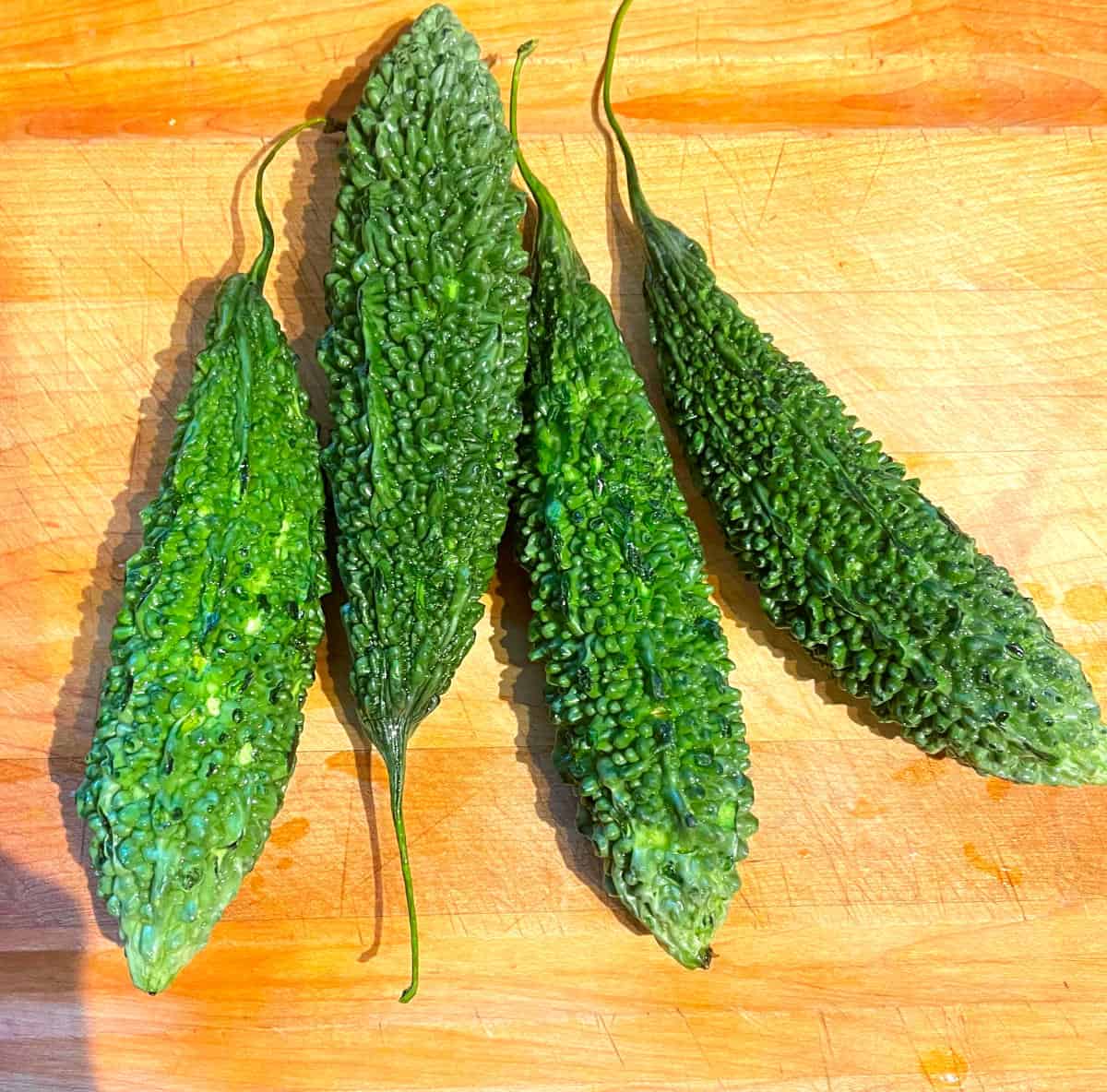
If you are brave enough to go ahead and cook the bitter gourd, you will almost certainly be put off at first by its intense bitterness. This is not the honeyed bitterness of fenugreek or the pungent bitterness of mustard. It's an all-out, eat-me-if-you-dare, unabashed bitterness that dominates your tastebuds.
But while karela's bitterness might be off-putting to a new eater, it is also its secret sauce: the reason why it is exactly the kind of superfood you should grow to love if you want to live to be a hundred...or at least to live healthfully for however long it is you wish you could live.
Bitter melons owe their bitterness to bioactive compounds that, studies show, can help lower blood sugar levels, making this a great food for diabetics and low-glycemic eaters. These warty gourds are also packed with polyphenols, which help reduce inflammation in the body, and with soluble fiber that healthy gut bacteria love. Some lab studies have also shown bitter gourd could be helpful in fighting cancer, including leukemia and breast cancer.
Bitter melons can also aid weight loss, by speeding up fat metabolism. And they are packed with vitamins A and C and zinc, among other micronutrients.
Now, would you be willing to overlook that warty appearance and even that bitterness?
If you are, I have for you today a recipe that you will grow to love as much as we do, guaranteed. This karela pitlai or pavakkai pitlai.
This is a south Indian dal, made by cooking the bitter melons with tuvar dal or split pigeon peas, and spices that perfectly complement the melons' unique flavor.
One of the things Indian cooks do to convince people to eat karela is to douse it in fat or sugar. They deep-fry the karela, or stuff it with peanuts and jaggery. As delicious as all that can be, what's the point in starting with a healthy veggie and making it unhealthy?
With this pitlai you don't just get the healthfulness, but you get tons of deliciousness. Coconut milk and a hint of jaggery or sugar, along with the dal and spices, nicely mellows down the bitterness of the karela.
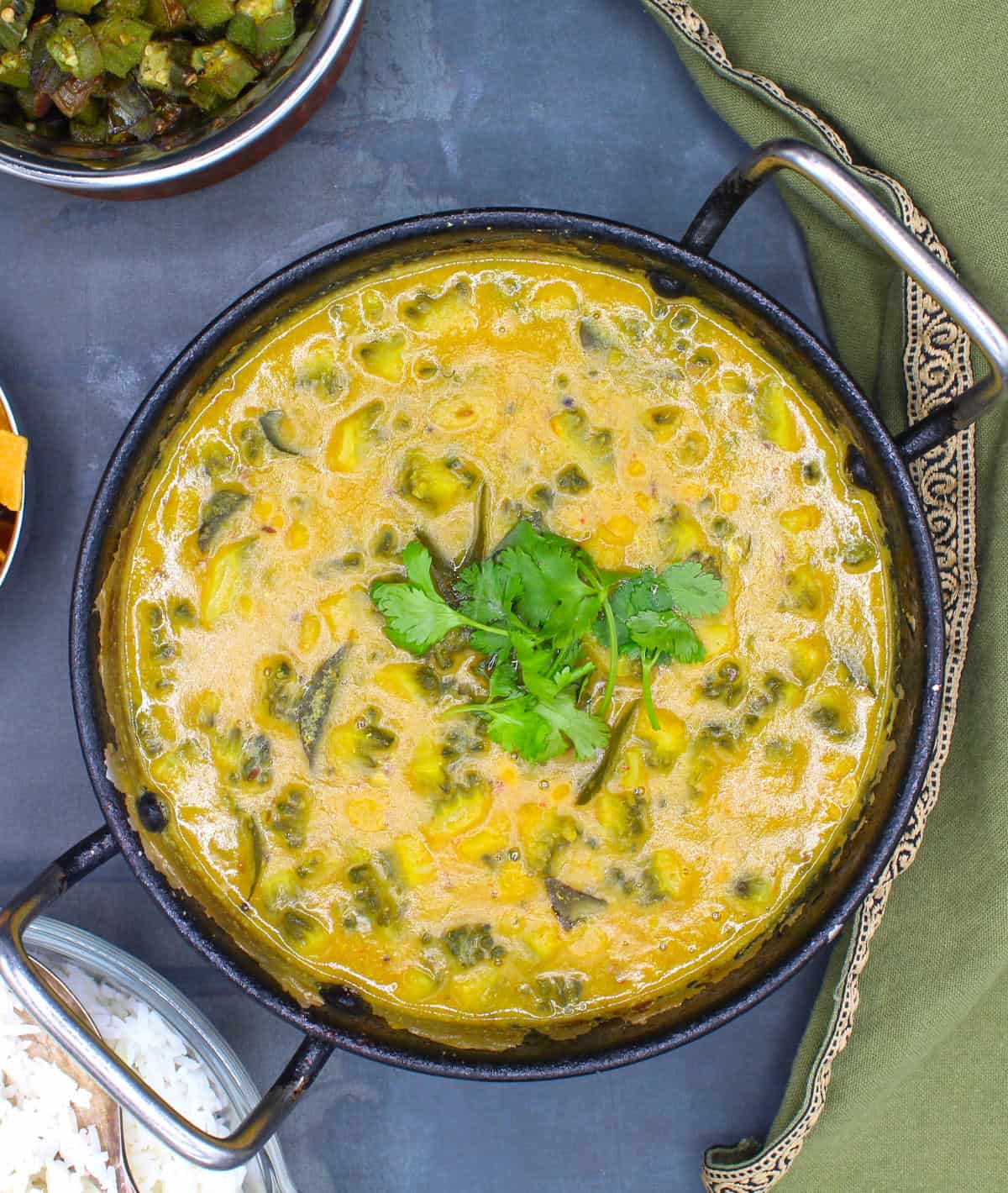
What is a pitlai?
A pitlai (pronounced pit-lay) is a south Indian dal that's thicker than the other famous south Indian dal you might be familiar with -- sambar (or kuzhambu), the orange-red dal with veggies that's usually served as a side along with chutney when you order a dosa at a south Indian or Udupi restaurant.
Pitlai, which usually has coconut in it, is typically served with idli or rice. It is especially delicious with curd rice.
Why you'll love this Pavakkai Pitlai
- It's delicious. The ingredients here work together to make this a tasty dish that will make you love this veggie--or at least help you begin to love it.
- It's healthy. Lentils and one of the healthiest veggies on the planet? It's a no-brainer. This dish also balances out all of the six tastes of ayurveda magnificently: bitter, sweet, sour, salty, spicy and astringent.
- It's easy. Making a dal is never difficult and while this one requires some roasting of spices and blending, none of it is difficult work and I will walk you through it. At the end you'll have a delicious, healthy dish -- and a halo of achievement around your head.
- It's unique. If you love eating at Indian restaurants, it is well worth trying out an Indian dish that you'll never find in one.
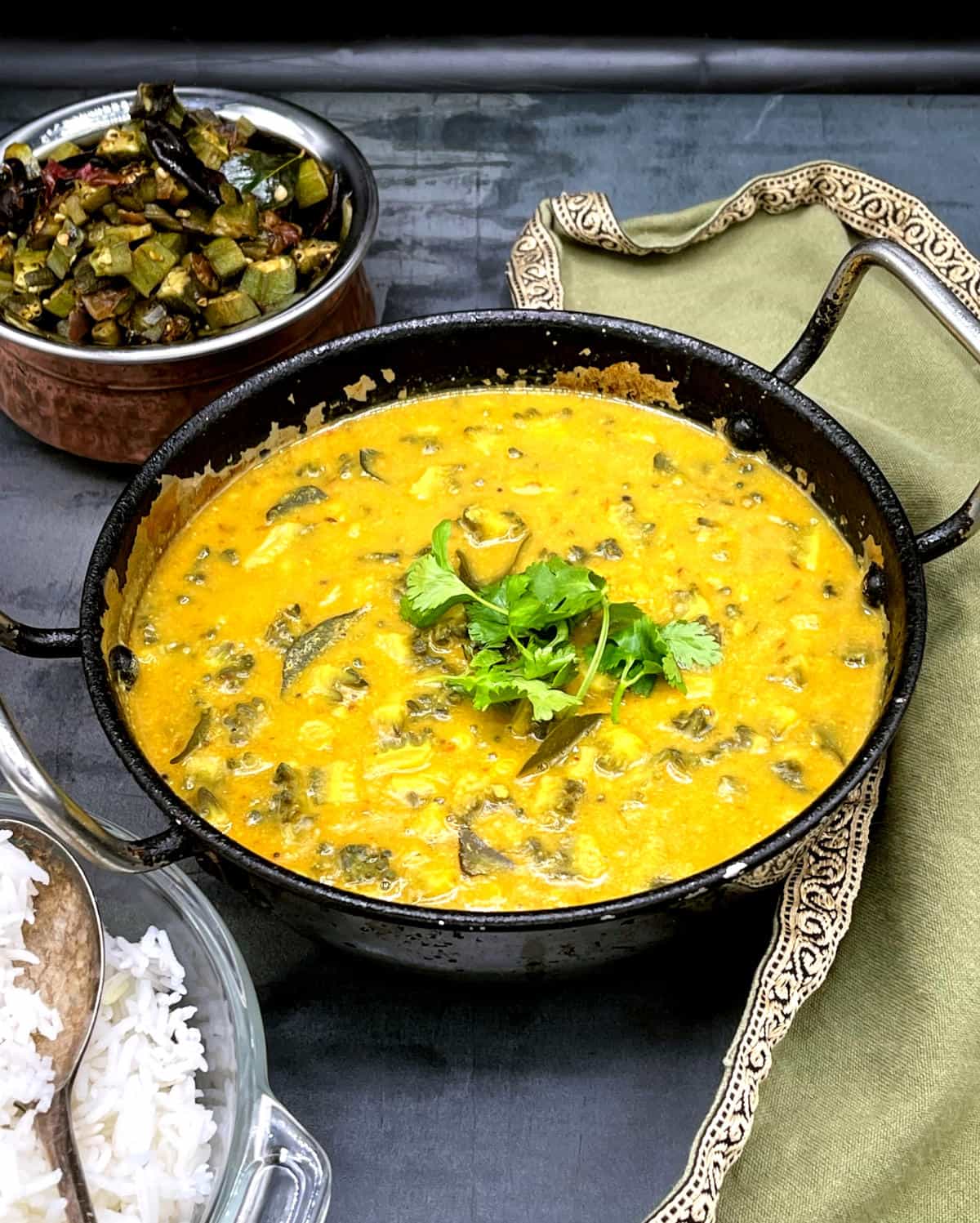
Ingredients
- Bitter gourds or bitter melons (karela in Hindi/pavakkai in Tamil). When you shop at the Asian market, pick up smaller gourds that are dark green and shiny with no black or white spots. Bigger sized gourds are fine, if that's all you can find, so long as they look healthy. When prepping the karela make sure you deseed it. Some Indian karela recipes do use the smaller seeds but as one reader helpfully pointed out, the seeds can be toxic to some, especially those not used to eating them.
- Turmeric. For color and healthfulness.
- Tuvar dal (split pigeon peas). This dal, most commonly used in cooking around India, forms the base of the pitlai.
- Coriander seeds. An essential spice used in cooking all around India, much like their leafy shoots, coriander seeds add a lemony freshness to spice mixes.
- Chana dal. In masalas like the one we will make for this pitlai, chana dal, also called Bengal gram dal, acts both as a flavor agent and a thickener.
- Dry red chili peppers. Use any you have on hand, including any Indian pepper or arbol peppers, but make sure you know how hot the pepper you are using is, so you can increase of decrease the quantity. I used two because the ones I used, bought at the Indian store, are moderately hot.
- Unsweetened, shredded coconut. Use fresh or frozen. If using frozen, thaw before adding to the saucepan. Coconut adds sweetness to this recipe, critical for mellowing the bitterness of the karela.
- Asafetida (hing). A resinous powder that's frequently added to Indian foods, hing or asafetida adds a unique flavor to dishes like pitlai or sambar.
- Cumin seeds. The earthy flavor of cumin adds delicious depth to this curry.
- Mustard seeds. For pungent, delicious flavor.
- Curry leaves. Curry leaves are an indispensible herb in south Indian cooking and their magnificent flavor makes this pitlai even tastier, so do use them.
- Tamarind paste/pulp. These add the critical tang needed to balance all the flavors in this recipe.
- Jaggery. This is an unrefined sugar commonly eaten in India and sold in brown lumps or powder form at Indian groceries and online. Sugar is fine as a substitute.
- Cilantro or coriander leaves. For garnish and a delicious finish.
How to make Pavakkai Pitlai
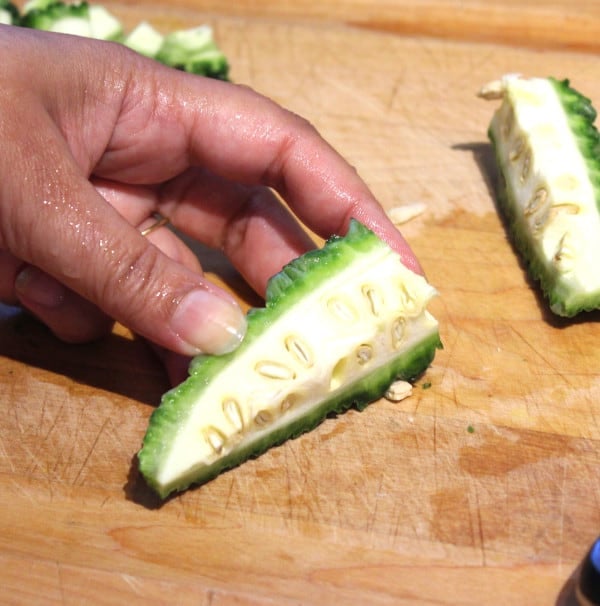
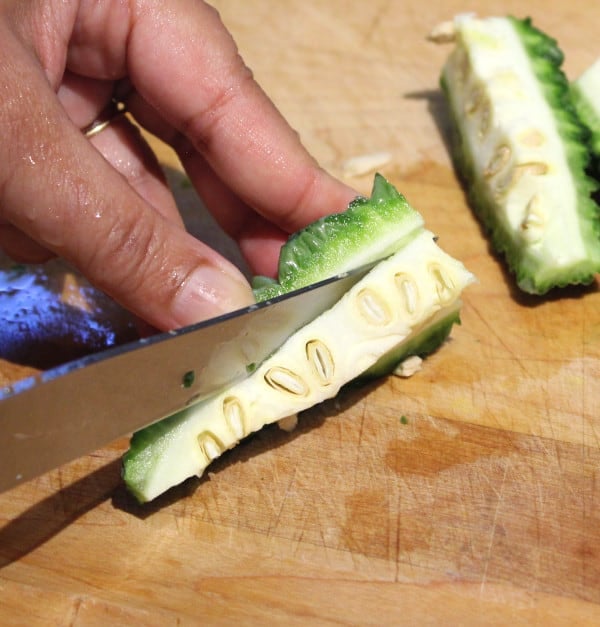
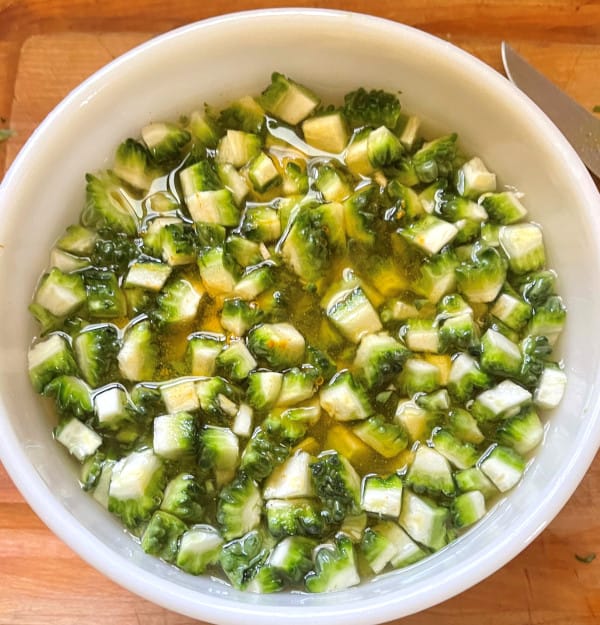
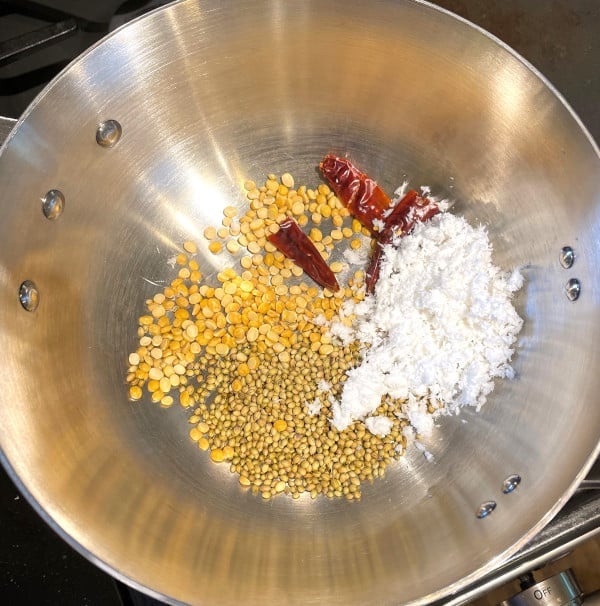
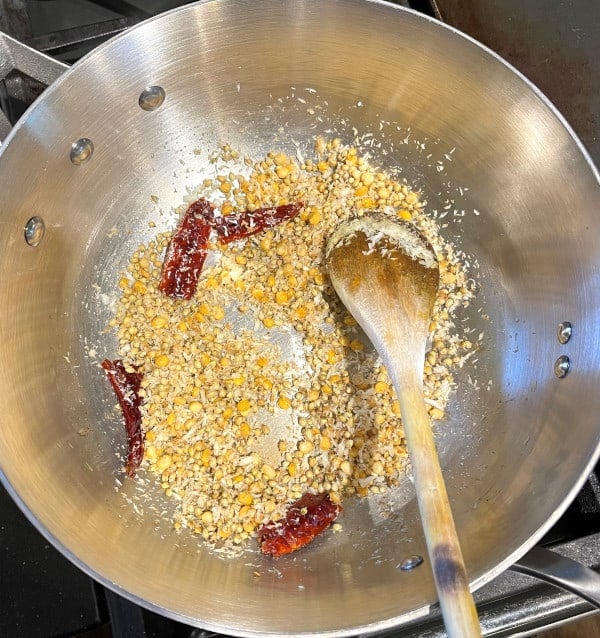
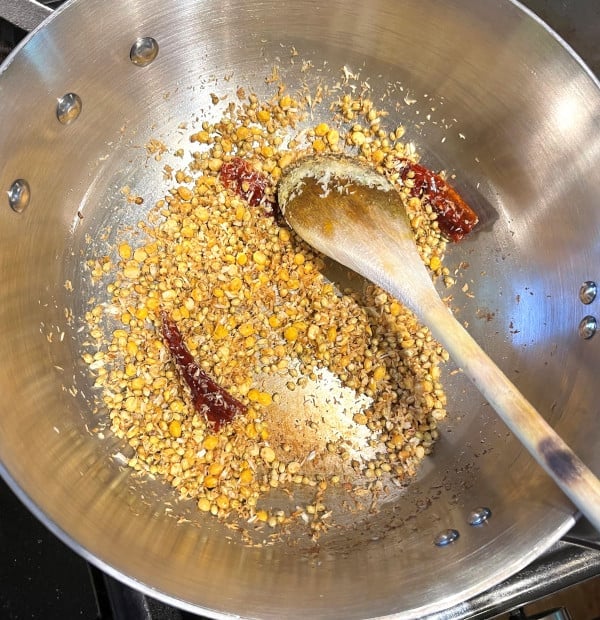
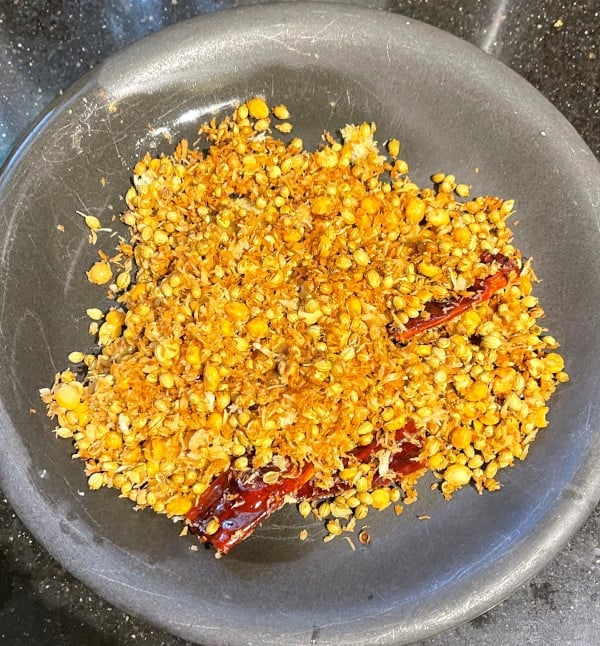
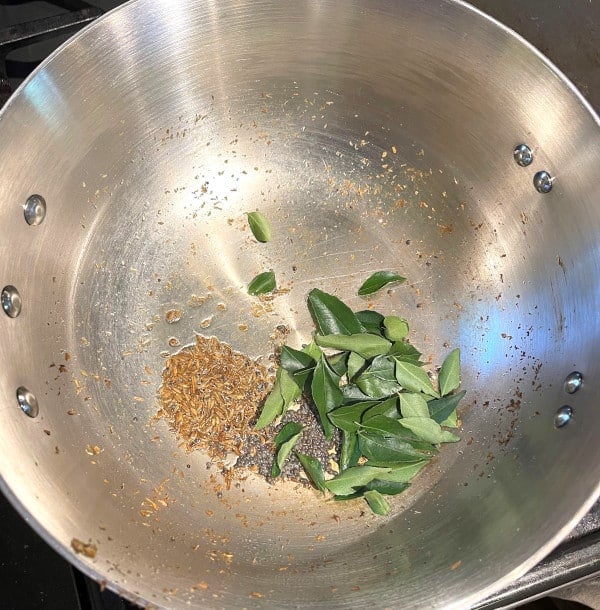
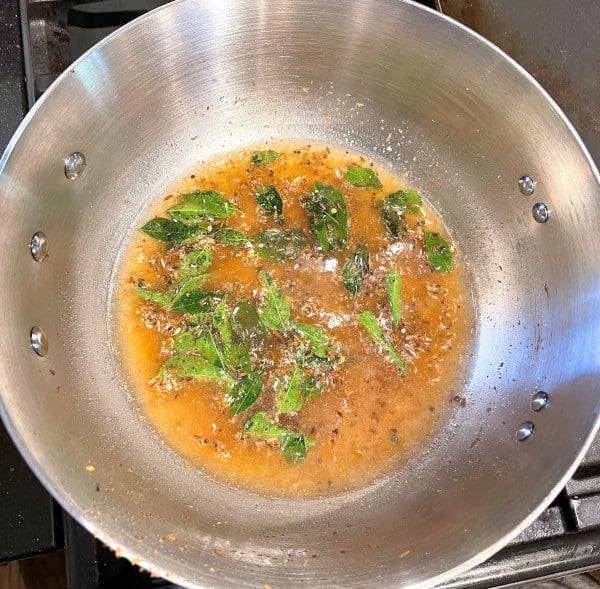
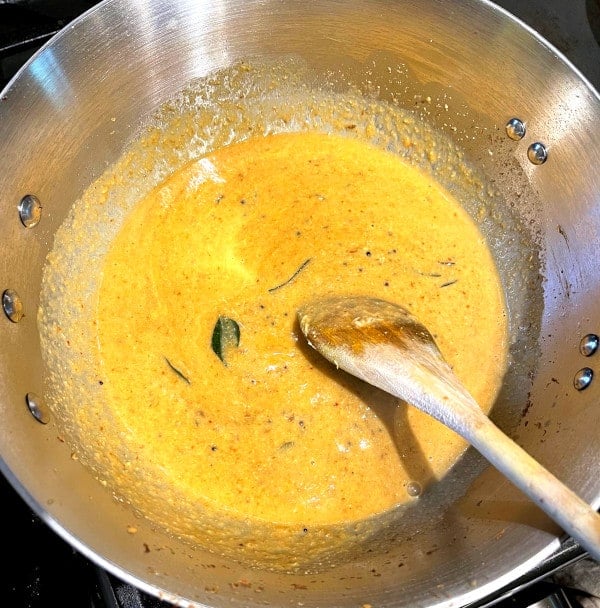
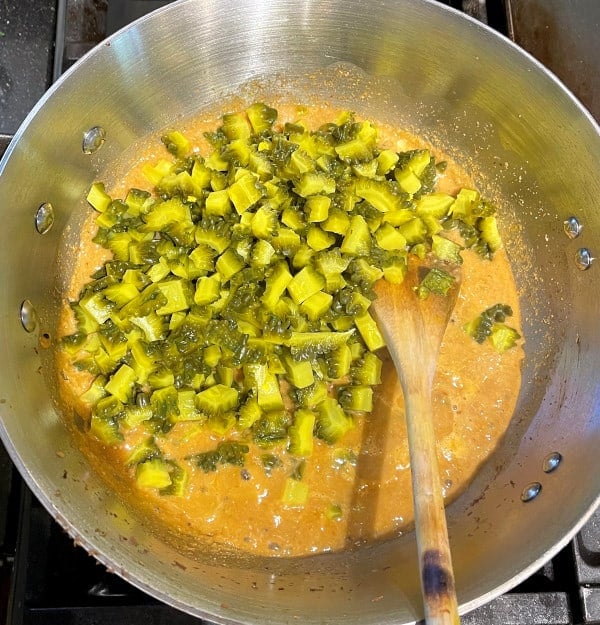
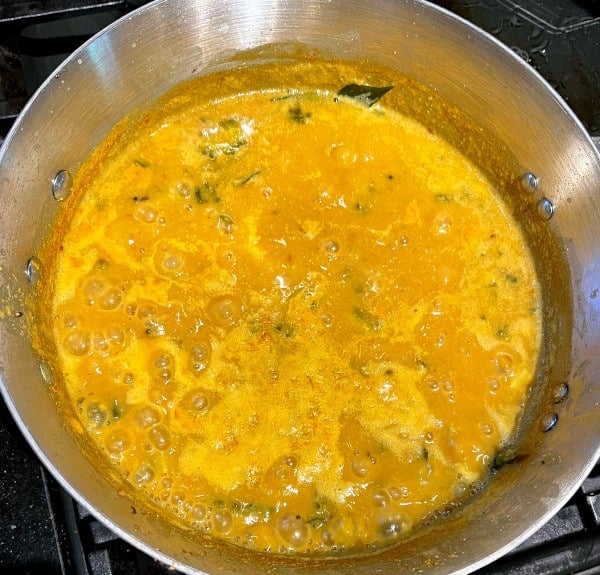
Storage instructions
Indian foods like dals are best eaten fresh--that's also when they are considered to be at their healtiest. That said, in the real world today most of us do not have the bandwidth to cook food just before we eat it. So I'd recommend making this eating the day you plan to eat it, and then storing leftovers in the refrigerator for 2-3 days.
What to serve with Pavakkai Pitlai
I like serving this pitlai with rice and a simple dry curry or sabzi, like okra sabzi. Potatoes are a great complement to bitter melons and you'd do really well if you were to make a potato side like these Bombay Potatoes to eat the pitlai and rice with. Also serve something crispy, like poppadum, on the side.
You can also serve the pitlai with idli or dosa.
More south Indian lentil recipes
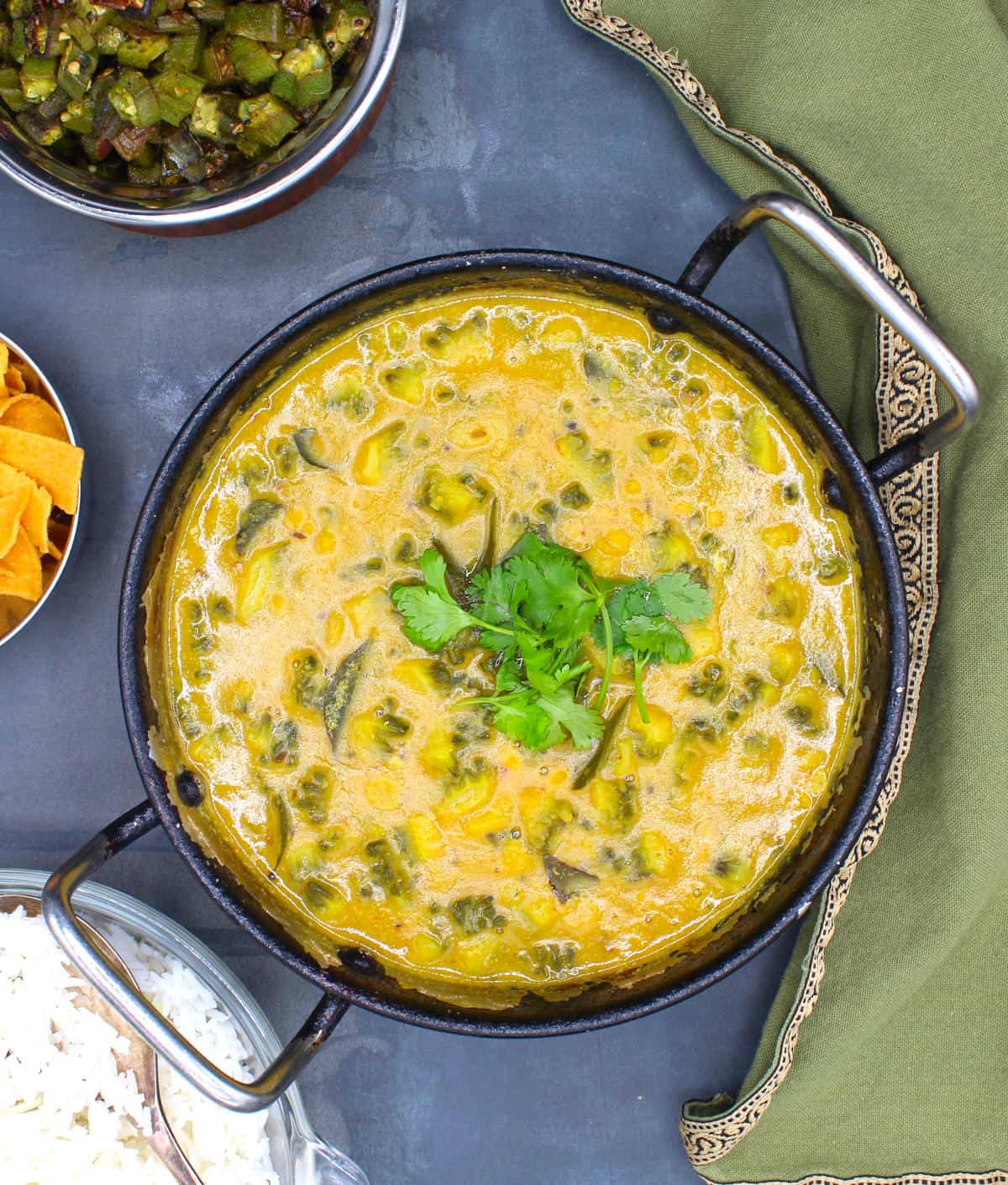

Pavakkai Pitlai Recipe
Equipment
- Pressure cooker (to cook lentils)
Ingredients
- ½ cup tuvar dal (split pigeon peas or arhar dal or thuvaram paruppu)
- 4 bitter melons (cut into thin slices vertically, cut out the portion of the white flesh that has seeds embedded in it, then chop the green portion into small cubes, about 1 centimeter each.)
- ½ teaspoon turmeric (divided)
- 2 teaspoon coconut oil (divided)
- 1 tablespoon chana dal
- 2 tablespoon coriander seeds
- 2 dry red chili peppers (broken into smaller pieces, or use 1 teaspoon or less of red pepper flakes)
- ¼ cup coconut (grated, unsweetened)
- ½ teaspoon asafetida (hing)
- ½ teaspoon mustard seeds
- ½ teaspoon cumin seeds
- 2 sprigs curry leaves
- 1 tablespoon tamarind paste/pulp
- 1 tablespoon jaggery (powdered or grated. Alternatively use sugar)
- 2 tablespoon cilantro (chopped)
- Salt to taste
Instructions
- Cook or pressure-cook the tuvar dal with water and ¼ teaspoon turmeric until very soft and mushy. Set aside.
- Place the chopped bitter melon pieces in a saucepan or bowl with enough water to cover. Stir in ¼ teaspoon of turmeric. Cook on the stovetop or in the microwave until the veggies are tender, about 10 minutes. Drain out the water and set aside.
- Heat 1 teaspoon oil in a saucepan. Add the chana dal, coriander seeds, red chili peppers and coconut. Saute on low heat for 5-10 minutes or until the coconut is golden-brown and the coriander and dal are a couple of shades darker. Don't leave this unattended and don't do this over high heat as coconut has a tendency to burn. Turn off the heat and stir in the asafetida.
- Let the spices and coconut cool on a plate, then blend into a smooth paste with ¼ cup water. Set aside.
- Heat the remaining 1 teaspoon oil in the same saucepan. Add the mustard and cumin seeds. When the mustard sputters, add the curry leaves. Saute for a few seconds.
- Add the tamarind with ½ cup water. Bring to a boil and let it simmer a couple of minutes.
- Add the drained bitter gourd, cooked dal and blended coconut spice paste to the saucepan. Stir in the jaggery and add more water if needed to thin out the dal to your liking.
- Add salt to taste. Bring the pitlai to a boil and let it continue to cook over medium heat another five minutes for all the flavors to merge.
- Turn off the heat, garnish with cilantro, and serve hot.
Notes
- If you set out to buy bitter gourds at an Asian market, you will likely find two varieties: one with a harder, darker green skin and sharper spikes, like the one I pictured above, and another that's larger and lighter green with a softer appearance. Either will work in this recipe.
- Some cooks like scraping off the spiky skin of the karela before cooking, but I like keeping it on for more healthfulness.
- If you can't quite handle karela and would like to make this dal with another veggie, use any squash, including Indian squashes like bottle gourd (dudhi) or any winter squash or zucchini. You don't need to precook these squashes, just add them directly to the pot along with the tamarind pulp and water.

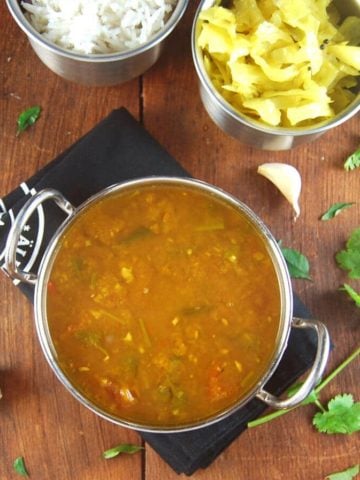
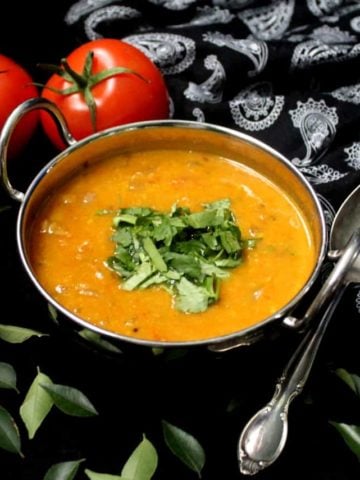
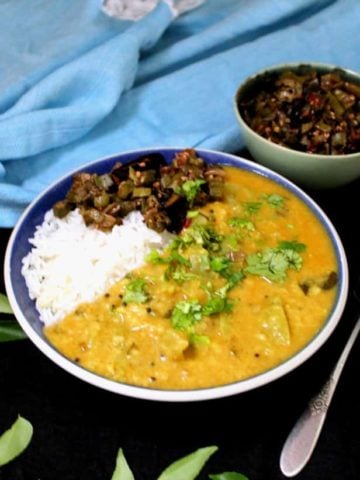
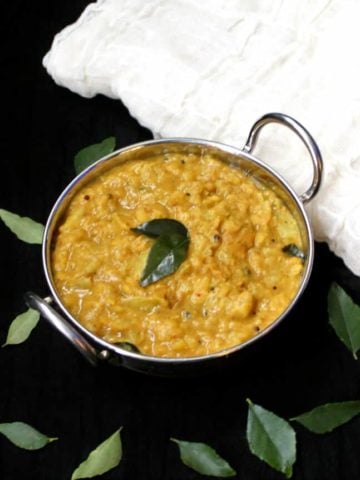
A Jayakumar
Hi Vaishali
This is a great recipe. I have never heard of pitlai before but I am now addicted to this. As a person who loves bitter flavors, I enjoy the bitterness of the pavakkai and would not add any sweeteners to mask that taste. Thank you!
Dido
Vaishali,
Thank you for posting this recipe of an oft-neglected vegetable. 2 questions that I have: (1) Being not too fond of the taste of sweeteners in my dals or even entrees, would the dropping of jaggery impact the taste in a big way? (2) In the place of tamarind in Indian dishes, I have been using the Japanese Umeboshi paste, especially for its alkaline qualities. Will this substitution interfere with the final taste, as well? Thanks, Dido.
Vaishali
Hi Dido, leaving out the jaggery will result in a sharper bitterness in the final dish, but if you don't mind it, sure, leave out the jaggery. I haven't tried umeboshi paste as a substitute for tamarind so can't comment on that for sure. Sorry.
Regenald McDaniel
You should note for your (oh so lost, American) readers that bitter melon seeds can be toxic. I did not realize this and recently made a really nice shukta, which now has me in love with the flavor that is reminiscent of a wonderful southern greens mixed with the other delightful other flavors. As I was preparing to make this recipe of yours I did a little research on the nutritional value of the seeds (since you discarded them in the recipe). I found out that the reason that I just got out of the hospital for extreme vomiting and nausea with dehydration may have been due to consuming the seeds for several days in a row.
Vaishali
Hi, many Indian recipes do include the seeds, and they've never harmed me or my family, but your point is well taken as I imagine some not used to eating them can find them a bit overwhelming for their system. I'll make a note of it in the blog, and hope you enjoy the pitlai!
Paul Ruscher
I'd really like to try this out as it looks interesting. So tuvar dal equates to pigeon peas and chan dal equates to chickpeas, correct? Can I use tamarind paste instead of pulp or would you recommend a better substitute?
Also in general, how would you best describe the flavour?
Thanks!
Paul.
Vaishali
Hi Paul, your are correct about tuvar dal but chana dal is a bit different from the average chickpea. It is made with black/brown chickpeas which are called kala chana. These chickpeas are hulled and the bean is split to get chana dal. Some people do use chickpeas in pitlai so I think it would be fine to substitute, but mash them up a bit.
I use tamarind paste and pulp interchangeably, so paste is perfectly fine.
I'd say the flavor is that of a coconutty dal with notes of spice and tang and sweetness, and you get a bit of bitterness (although not overwhelmingly so) when you bite into the bitter gourd. Make sure the veggie cooks up very tender.